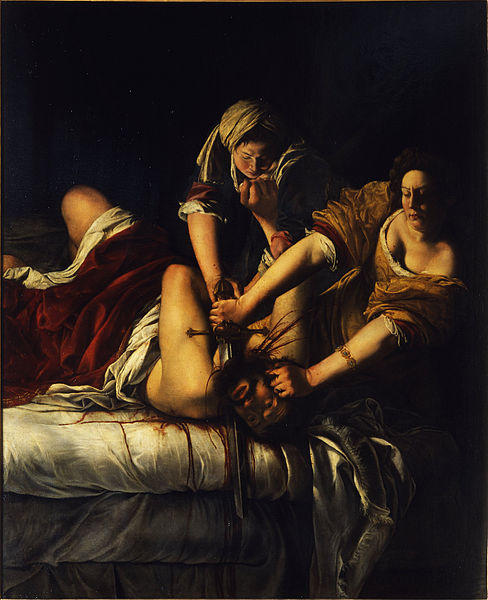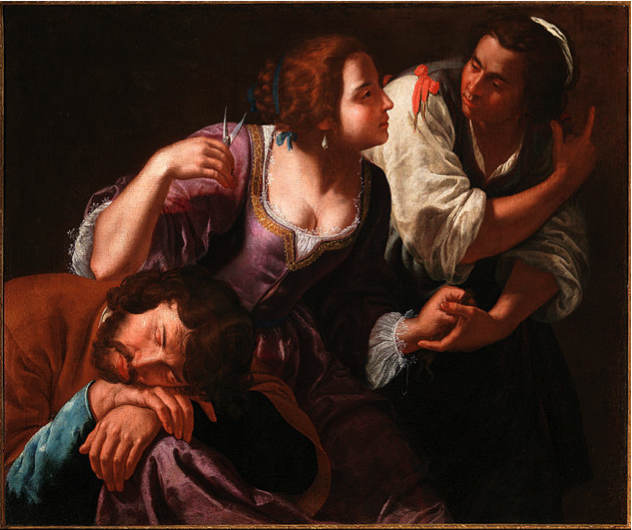Artemisia Gentileschi is regarded as one of the most prolific artist of the seventeenth century at a time when women were stigmatized and considered incapable of practicing any form of art. During her time, painting was a prestigious career that was dominated by men. It was a mode of communication in a society where civilization was gaining shape. At that time, Italy was one of the major centers of civilization. Artists used painting as a way of championing for the rights of the weak, a means of communication affection, and a mode of empowering the youth to take active role in the development of their society.
Artemisia came out as a unique painter capable of portraying her emotions using the work of art. Her success as a painter and the popularity of her work saw her become the firm woman to enter Accademia di Arte Del Desegno (Rabey & Goldingay, 2013). This was a prestigious institution for accomplished artists of her time. Before her entry into this institution, it was difficult to believe that a woman would be so accomplished in art to be allowed to join the institution. Her excellent painting work made that possible. In this paper, the researcher seeks to prove that although Artemisia Gentileschi’s life was marked by a number of challenges and controversies, she rose to become one of the greatest painters of her time and made significant contributions in the field of painting.
Background of Artemisia Gentileschi
According to O’Brien (2009), Artemisia was born on July 8, 1593 in the city of Rome in Italy. Like many girls of her time, she joined a local school at a very tender age. However, she had to drop out of school for two main reasons. The first reason was that girls of that time were not expected to get the kind of education that boys did. Their place was believed to be at home taking care of their family. The second reason was that her father was not earning much from his work as a second-class painter. She developed interest in painting at a very early age. She would spend time in her father’s workshop to practice how to paint. After dropping out of school, she concentrated on painting.
In 1611, her father hired a family friend known as Agostino Tassi to be her tutor as it was evident she was interested in becoming a professional painter. However, Agostino took advantage of the trust the family had towards him and sexually assaulted Artemisia. This incident changed her life completely. She was traumatized and came to realize that indeed women in this society went through pain at the hands of men. She took part in the prosecution of Agostino for the rape case, but did not affect her desire to champion for the rights of women and the weak in the society. The incident defined her path in the career of painting.
Career in Painting
According to O’Brien (2009), Artemisia started her painting work in Rome, her birthplace. Her early works were motivated by the rage she had towards men who took advantage of women primarily because women are physically strong. She wanted to pass a message that although men may have the physical strength women also play a critical role in the society and, therefore, must be respected. She turned to bible and identified women who played significant role in liberating their society despite the perception that it was the role of men to defend their country. In one of her early painting, she depicted Judith and her maid slaying Holofernes for raping a woman. The figure below shows the painting.

The painting captured attention of her society primarily because of the level of violence in it. It received criticism from a section of the society and they complained that it was not an accurate representation of a civilized Rome where dialogue reigned over violence. However, this did not stop her from depicting violence in her painting. She was an advocate for women empowerment and nothing was going to stop her from achieving her mission. However, she had already become unpopular in Rome because of the level of violence in her paintings and the fact that men were often the victims of such violence.
She went to Florence where her work gained massive success. Her work still depicted women as successful members of the society and she still relied on the bible to pass her message. However, the painting depicted less violence compared with her paintings in Rome. It was in Florence that she became accepted into the prestigious Accademia delle Arti Del Disegno (Smith, 2008). Her work became very influential. The figure below shows one of her work where she depicted Delilah as a strong-willed woman who was able to save her society by spying on Samson.

She developed good relationship with other painters and she explained to them the motivation behind her feminist campaigns. She returned to Rome in 1621 as an accomplished painter who had gained acceptance and admiration among the high and mighty in the society. She settled in Venice where she continued to champion for the rights of women. O’Brien (2009) says that a section of the society even thought that she hated men, especially after she divorced her husband in Florence before moving back to Rome (Brine, Ciletti, & Lähnemann, 2010). However, there are those who believe that she was motivated by the desire to have a community where women are given equal treatment as men.
Impact on the Field of Art
Artemisia, like many other great painters before and after her, used art to pass a message to the society. She played a critical role in transforming the art of painting from one that focused on beauty to that which focused on passing messages. She influenced many painters after her to use this art as a way of communicating to the members of the society. Her works exhibited a great sense of artistry in terms of beauty, precision, and many other factors considered important among painters of her time. However, one of the most outstanding factors in all her paintings was the message that was exhibited in these paintings. All her paintings had a specific message meant for the audience.
It was not difficult to depict the message she was trying to put across in her paintings. Some scholars believe that Artemisia demonstrated, through her paintings, that at times violence is a means of solving social evils in the society. She is one of the greatest artists who used biblical stories to tell her own story. The use of biblical stories was partly the reason why she gained massive popularity in the society because Christianity was a popular religion among the local population. She was able to pass an important message to the upcoming painters that they had responsibility to use their artistry to sensitize the society and fight social evils.
According to Vidal (2012), Artemisia Gentileschi played a critical role in the development of early feminist movement at a time when men dominated the world. At her time, issues such as rape were never treated seriously because women were regarded as inferior to men. However, at a tender age of 18 she was able to put pressure on his father and the society in general to see to it that the man who raped her was taken to court. She was personally present during the rapist’s prosecution and saw justice served. It did not end with the prosecution of Agostino.
She continued to pass a message to the society that women had a role to play in developing their communities. At first, her work depicted violence as a way through which women can overcome constant molestation by men. She then focused on bible, singling out women such as Esther and Mary Magdalene who played significant roles in saving their communities. She was even able to depict Delilah- a woman who many have considered a traitor for tricking Samson- as a hero who helped her society in destroying a man who was the greatest threat to their existence. She was telling the audience that women are always powerful and strong-willed, capable of doing anything to protect their loved ones.
References
Bal, M. (2005). The Artemisia files: Artemisia Gentileschi for feminists and other thinking people. Chicago, IL: The University of Chicago Press.
Brine, K., Ciletti, E., & Lähnemann, H. (2010). The sword of Judith: Judith studies across the disciplines. Cambridge, UK: OpenBook Publishers.
Christiansen, K., & Mann, J. (2001). Orazio and Artemisia Gentileschi. New York, NY: Metropolian Museum of Art.
Gender Across Borders. (20019). Artemisia Gentileschi: Artist and rape survivor. Web.
O’Brien, J. (2009). Encyclopedia of gender and society. Los Angeles, CA: SAGE.
Rabey, D., & Goldingay, S. (2013). Howard Barker’s art of theatre: Essays on his plays, poetry and production work. Hoboken, NJ: Wiley.
Smith, B. G. (2008). The Oxford encyclopedia of women in world history. Oxford, UK: Oxford University Press.
Vidal, B. (2012). Figuring the past: Period film and the Mannerist aesthetic. Amsterdam: Amsterdam University Press.